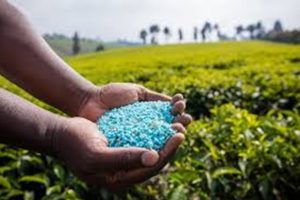
BY LAKACHEW ATINAFU
Data shows that the ratio of orthopedic professionals was 2:100 million over the preceding years. Ethiopians have suffered from natural and manmade disasters of bone damage which end up mostly with amputation.
The cost of orthopedic treatment is immeasurable in terms of finance as the country injured agonies of traffic accident, constructions of urban centers and mega projects.
Beyond this, the medical supply and fixing fragmented bones is the question that matters in building strong defense force and rescue the country from devastation in all areas of development and national security.
These days, the relapse of the war in north Ethiopia demanding the nation to finance more not only for artillery but also for medical facilities and professionalism.
Hence, determined professionals are rallied together to contribute and discharge their moral responsibility and tried their best to rescue the economy of Ethiopia that has been under temptation especially providing support in orthopedics.
Orthopedic surgeons are devoted to the prevention, diagnosis, and treatment of disorders of the bones, joints, ligaments, tendons and muscles. Some orthopedists are generalists, while others specialize in certain areas of the body, such as: Hip and knee.
Indeed traffic accident was on the lead for amputations and elimination of infected limbs over the last decades. The recent northern conflict ushered casualties which demand determination of very few professionals and very expensive and complicated medical department.
As it has been observed the middle term memory of the national data, Ethiopians have to gone abroad for medical tourism or else opt to alter herbal and traditional treatment if they couldn’t afford.
Meanwhile, the nations have seen glimpse of hopes at the orthopedics medicine that historically coincide to avert the damages of bones due to conflicts and such determined individuals contribute lots to curb staggering foreign currency supposed to be incurred.
Wounded military personnel of national armed forces are managed successfully by military surgeons, according to well-established protocols, along with significant logistic and medical resources. The same is rarely true for civilian victims or the members of less structured armies.
In the cross-border and civil wars of the developing world, the distinction between combatants and noncombatants is blurred, and civilian casualties far outnumber military ones. Civilian orthopedic surgical practice in a conflict area is characterized by a lack of resources and a high proportion of ballistic trauma, alongside more conventional wounds.
As everybody knows, the world has forced to live with millions of impaired individuals and envisages mainstreaming people with disability as issue of concern.
Amid all this, Physical impairment is one of the predominant hazards for developing nation due to natural and manmade catastrophes. Most notably in Africa, there are damages frequently observed in relation to orthopedics. And such professionals were no or few however it would not be appropriate to deny herbalists and traditions of fixing bones and cartilage fragments.
According to the Ethiopian Orthopedics Association recent forum held in the capital under the leadership the MoH, the initiative that had been taken by few individuals has borne fruit in the orthopedics medicine and lots are rehabilitated and joined the national endeavors at no or very little cost.
The association has been making a point in terms of fixing fragmentation of bones and psychological make of the citizenry unthinkable to match it with human possessing.
Dr. Geletaw Tessema, Sub specialist is the president of the Ethiopian Orthopedic Trauma Specialist National Association. He completed his primary education in Merhabete and his high school education in Addis Ababa. He received his bachelor’s degree in general medicine and master’s degree in orthopedics specialty from Addis Ababa University College of Health Sciences.
He went to Canada and did his third degree at the University of Toronto, specializing in bone surgery.
He want to give priority to orthopedic standards after graduating from seven years of general medicine, completes another four years of orthopedics. Thus, he becomes an orthopedic surgeon.
After this, he has to study for one year and graduate for the human specialty. There are about 13 sub-specialties. Among these, there are specialists who treat children’s bones, ligaments, hips and joints that are at risk of breaking due to sports or various reasons, fractures and sprains.
The National Association of Orthopedic and Trauma Specialists of Ethiopia is active with 450 orthopedic surgeons or orthopedic specialists and sub-specialists in Ethiopia as members.
Dr. Geletaw said the first orthopedic treatment in Ethiopia was started in the Tikur Anbesa Hospital, and the Orthopedic Association was born in connection with the treatment.
The members were only orthopedic surgeons in the hospital’s orthopedic department. Out-of-hospital orthopedists have only recently begun to be embraced by the association.
The room has now grown into a centerpiece. Therefore, the same orthopedic center in the hospital has become a mother to ten government hospitals in different areas to establish their own orthopedic centers.
Jima, Adama, Mekelle, Bahir Dar, Hawassa, Hossaina, Dire Dawa hospitals are mentioned among those who established the centers. As a result, the association has brought many benefits to its members.
By inviting foreign specialists and human specialists to share their experiences and transfer knowledge, conduct research on orthopedics, receive capacity building training, prepare panels and thereby gain knowledge by enabling educational discussions.
There have not been many women involved in orthopedics either locally or internationally. There was a female orthopedist that served us for many years and retired with honor.
The association honored her with a lifetime award at its 16th annual meeting. There are currently ten women among the members embraced by the association. Orthopedic treatment is that women can participate without exception.
It is said that a bone grafting specialty program has been started at the Tikur Anbesa Hospital. It is difficult to go abroad and attend orthopedic specialist training, because the economy tests capacity.
Keeping this in mind, a bone marrow specialty program was started for the first time in Tikur Anbesa Hospital and is being carried out in an efficient and successful manner.
Thus far, two orthopedic specialists have graduated and started working, and two other subspecialists will graduate soon. Neighboring countries have also been made to attend the program.
Based on this, three orthopedic specialists from Tanzania and Zimbabwe attended the program and graduated in sub-specialty and went back home.
“Orthopedic treatment and accident treatment should be carefully considered. In our country, it is common and the government pays attention to preventable and contagious diseases (HIV, TB, malaria, etc.)”, the sub specialist said.
The rate of bone loss is currently very high. Over speeding has increased. Many people are injured or killed every day by being hit by a vehicle. Apart from that, it is observed that many people are injured in many building works and constructions. Many factories are being opened, and at the same time many workers will be affected in connection with the machines.
More than 97 % of the medical activities performed by Tikur Anbesa Hospital are accident related. Therefore, the issue of strengthening the orthopedic system should not be neglected. It is also important to provide resources for the treatment without any problems.
As this is not the case, most of our resources are aided. But this should not continue. For one reason or another, the aid may be terminated. It will have the opportunity to stop the treatment.
“Before we get into the help, if I explain a little bit about the delivery of the treatment, it will make the matter clear. In earlier years, the only option for a patient with a leg injury was to have it bandaged and then amputated if there was anything injured.”
This type of treatment takes at least four months. But over the past decade, treatment has improved. By putting iron on the affected body, it allows a victim to walk without any problems. The treatment only takes four days. After the mentioned days one will walk. But the imported steel is very expensive.
To the contrary to the importance of orthopedic diagnosis and treatment to the national economy and reducing the foreign currency incurred upon it, rehabilitate people with disabilities and physical impairment, it was in vain to get immediate reflection of relevant authorities as to Geletaw who added there was occasional aid obtained from Australia and Switzerland.
If there are enabling situations to produce some medical facilities at own capacity, there would be bright hope in the medical industry and the country could be benefited from medical tourism.
THE ETHIOPIAN HERALD THURSDAY 8 SEPTEMBER 2022





